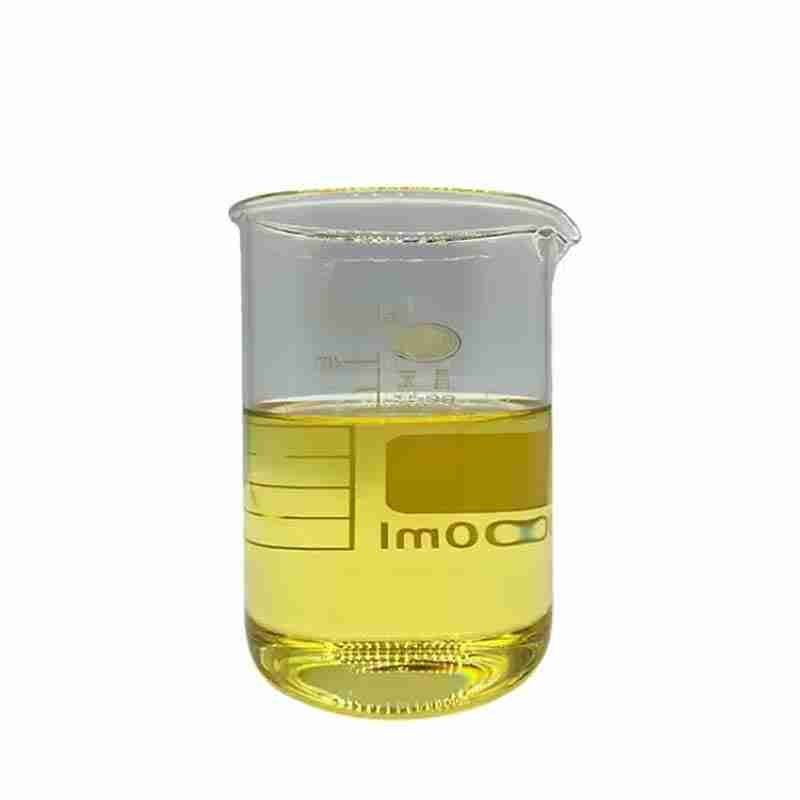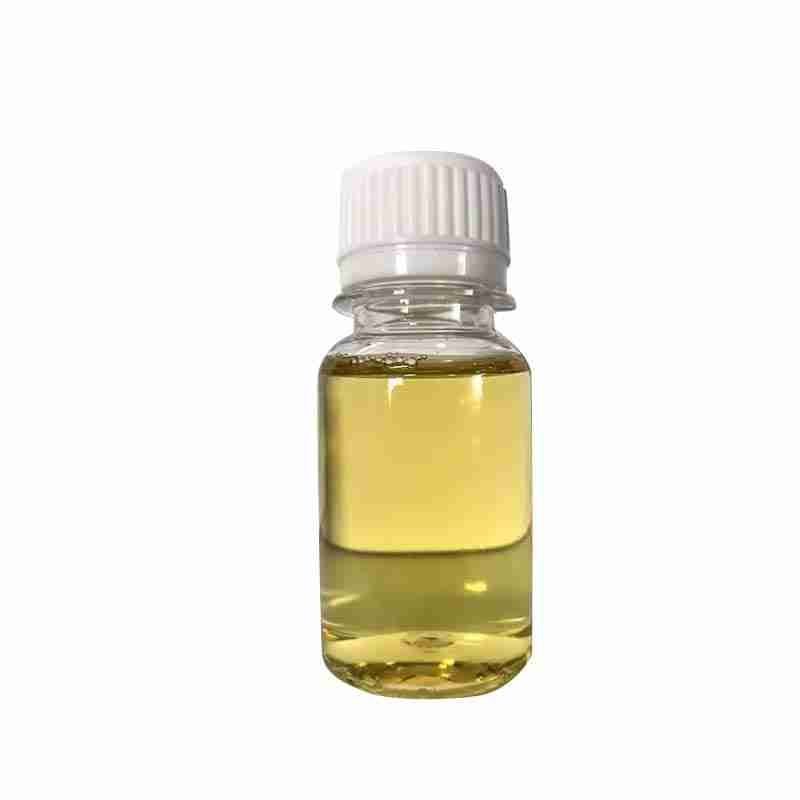Dioctyl Sebacate CAS# 122-62-3
Dioctyl sebacate, also known as bis-2-ethylhexyl sebacate, referred to as DOS, is produced by the esterification reaction of sebacic acid and 2-ethylhexanol. Suitable for polyvinyl chloride, vinyl chloride copolymer, nitrocellulose, ethyl cellulose and synthetic rubber, etc. It has high plasticizing efficiency and low volatility. It has excellent cold resistance, good heat resistance, light resistance and electrical insulation. It also has good lubricity when heated, making the product look and feel good, especially Suitable for making cold-resistant wire and cable materials, artificial leather, films, plates, sheets, etc.
发送询盘
Dioctyl Sebacate CAS# 122-62-3
| Bis(2-ethylhexyl) sebacate Basic information |
| Product Name: | Bis(2-ethylhexyl) sebacate |
| Synonyms: | OctoilDOS;octoils;Octyl Sebacate;octylsebacate;Plasthall DOS;Plexol 201;Plexol 201j;plexol201j |
| CAS: | 122-62-3 |
| MF: | C26H50O4 |
| MW: | 426.67 |
| EINECS: | 204-558-8 |
| Product Categories: | C12 to C63;Carbonyl Compounds;Chemical Synthesis;Esters;Organic Building Blocks;organic chemical;Fatty Acid Esters (Plasticizer);Functional Materials;Plasticizer;Building Blocks;bc0001;122-62-3 |
| Mol File: | 122-62-3.mol |
 |
|
| Bis(2-ethylhexyl) sebacate Chemical Properties |
| Melting point | -55 ??C |
| Boiling point | 212???C1?mm Hg(lit.) |
| density | 0.914?g/mL?at 25???C(lit.) |
| vapor pressure | <0.01 hPa (20 ??C) |
| refractive index | n20/D?1.450(lit.) |
| Fp | >230???F |
| storage temp. | Store below +30??C. |
| solubility | <1g/l |
| form | Liquid |
| color | Clear slightly yellow |
| Water Solubility | <0.1 g/L (20 oC) |
| Merck | 14,1251 |
| BRN | 1806504 |
| Stability: | Stable. Combustible. Incompatible with strong oxidizing agents. |
| InChIKey | VJHINFRRDQUWOJ-UHFFFAOYSA-N |
| LogP | 9.722 (est) |
| CAS DataBase Reference | 122-62-3(CAS DataBase Reference) |
| NIST Chemistry Reference | Decanedioic acid, bis(2-ethylhexyl) ester(122-62-3) |
| EPA Substance Registry System | Bis(2-ethylhexyl) sebacate (122-62-3) |
| Safety Information |
| Safety Statements | 24/25 |
| WGK Germany | – |
| RTECS | VS1000000 |
| TSCA | Yes |
| HS Code | 29171390 |
| Hazardous Substances Data | 122-62-3(Hazardous Substances Data) |
| Toxicity | mouse,LD50,oral,9500mg/kg (9500mg/kg),”Toxicometric Parameters of Industrial Toxic Chemicals Under Single Exposure,” Izmerov, N.F., et al., Moscow, Centre of International Projects, GKNT, 1982Vol. -, Pg. 62, 1982. |
- 2
- 2-diallylpent-4-en-1-amine
- 4
- 95-16-9
- Ammonium sulfamate
- Benzothiazole
- cas:67889-00-3ح2
- cas:83524-75-8 | pigment black 32
- cas:928836-00-4 | 2
- cas:932745-70-5 | 4
- Chemical Minerals
- Coconut diethanolamide
- Daily Chemicals
- discount
- for sale
- General pvc resin
- hexyl D-glucoside
- in stock
- Lauramidopropyl betaine
- LAURIC ACID MONOETHANOLAMIDE
- Petroleum Additives
- Plasticiser
- Ploymers
- price
- PVC
- quotation
- Raw Materal
- Remove term: Petroleum Additives Petroleum Additive
- SODIUM ETHYL 2-SULFOLAURATE
Related Products
Tetraacetylethylenediamine is a fully acetylated derivative of ethylenediamine, offering a high reactivity as an intermediate in organic synthesis. Its unique structure makes it a critical component in the production of specialty chemicals and pharmaceuticals, ensuring a wide range of applications in the chemical industry.
Chemical Name: STODDARD SOLVENT
CAS No.: 64742-88-7
Appearance: Colorless or Light Yellow Liquid
Common English name: 5-iodo-2,3-dihydropyridazin-3-one
CAS No.: 825633-94-1
Molecular formula: C4H3IN2O
Molecular weight: 221.98
Sample: Available
Butylated Hydroxytoluene (BHT) is a synthetic phenolic antioxidant commonly added to foods, cosmetics, and packaging to prevent the oxidation of fats and oils, thereby extending their shelf life. It is also used as a preservative in a variety of products, including rubber, petroleum products, and animal feed. BHT is recognized for its effectiveness in maintaining nutrient levels, color, flavor, and odor in food products . It is known to have a melting point of 69-71??C, a boiling point of 265??C, and is soluble in ethanol, acetone, and benzene, but not in water, glycerin, or propylene glycol . BHT is also used in some dietary supplements due to its antioxidant properties . However, it is important to handle BHT with care, as it can cause skin irritation and is considered harmful if swallowed .
Succinimide is a heterocyclic organic compound and an important industrial chemical. It serves as a key intermediate in the synthesis of various pharmaceuticals, agrochemicals, and other specialty chemicals. Known for its reactivity and versatility, succinimide is widely used in the production of succinic anhydride, a precursor to many polymers and plasticizers, highlighting its significance in the chemical industry.
Chemical Name: Dehydrocholic acid
Synonyms: Acide dehydrocholique; Triketocholanic acid
CAS No.: 81-23-2
Molecular Formula: C24H34O5
Molecular Weight: 402.53
Appearance: Powder
Ethylhexyl Palmitate is a skin-conditioning ester, derived from ethylhexanol and palmitic acid, that imparts moisturization and a smooth texture to cosmetic and personal care formulations. It is valued for its emollient properties, enhancing the sensory experience of skin care products.
Silicone oil, known for its chemical designation as dimethicone or polydimethylsiloxane, is a synthetic polymer with a backbone of alternating silicon and oxygen atoms, creating a highly versatile and stable compound. It is renowned for its exceptional lubricating properties, heat resistance, and non-toxic nature, making it a staple in various industries, including cosmetics, automotive, and aerospace.
This hydrophobic, non-volatile oil is valued for its ability to provide a smooth, non-greasy feel and to form stable emulsions with other ingredients. In personal care products, silicone oil is used to impart a silky texture, reduce friction on the skin, and create a protective barrier against environmental stressors without clogging pores.
Silicone oil’s chemical inertness and resistance to oxidation contribute to its long shelf life and stability in formulations. It is also appreciated for its compatibility with a wide range of substances, allowing for the creation of multifunctional products.
In summary, silicone oil is a reliable and multifaceted ingredient, offering a combination of performance, safety, and sensory benefits. Its use in a variety of applications reflects its versatility and enduring appeal in the marketplace.
N,N-Dimethylaniline is an organic compound with amine and methyl groups attached to a benzene ring. It is a colorless liquid with a characteristic amine odor. This compound is primarily used as a chemical intermediate in the synthesis of dyes, pigments, and polymers. Its reactivity makes it a valuable building block in the production of various organic compounds, particularly in the pharmaceutical and chemical industries.
Silicones are a family of synthetic polymers known for their versatility and stability. They are heat-resistant, non-toxic, and have excellent electrical insulation properties. Commonly used in various industries such as construction, automotive, aerospace, and personal care products, silicones offer a wide range of applications from sealants and adhesives to lubricants and medical devices. Their resistance to extreme temperatures and weathering makes them a preferred choice for many high-performance applications.
Chemical Name: o-Xylene
Synonyms: 1,2-Dimethylbenzene; ortho-xylene
CAS No.: 95-47-6
Molecular Formula: C8H10
Molecular Weight: 106.17
Product name:Cyclopentane
Purity:96%
Appearance:White powder
Package:25kg/bag
Sample:Available

















